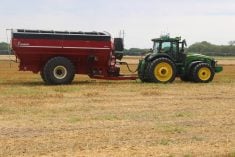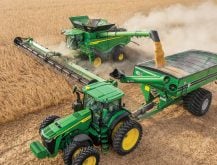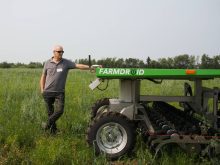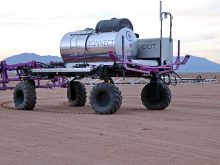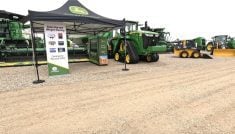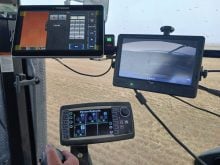In late February, John Deere invited the Western Producer to a vineyard in California to see and operate three battery electric prototype tractors and find out more about its entire electrification project.
Deere had three tractors to show, and like the approach taken by automotive BEV manufacturers, all are based on the same platform. However, each can be configured for a different application: orchard, vineyard and utility work with a front-end loader.
“We have a platform that we’ve put a lot of thought into,” says Julien LeVely, director of high value crops.
Read Also

Farmland advisory committee created in Saskatchewan
The Saskatchewan government has created the Farm Land Ownership Advisory Committee to address farmer concerns and gain feedback about the issues.
“We wanted to be able to scale from one machine to the next easily. They are very modular. This is going to be part of the lineup in the future. We’ll have a portfolio of vehicle options.”
The orchard and narrow vineyard versions are similar in size to the brand’s specialty 5ML line, but the third loader-equipped model is one that most Prairie livestock producers would find familiar.
The prototypes are comparable to a 130 horsepower diesel tractor, which is near the top of the horsepower range that Deere engineers think is suitable for electrification.
“Battery technology is evolving very quickly, but today anything less than 150 horse is a good candidate for electrification,” says LeVely.
Up to five battery packs are integrated into the standard platform.
“It’s very similar to how automotive has designed theirs with a skateboard mentality,” says Derek Muller, business manager for battery tractors.
“The powertrain is really compact, and we have five power packs, one in the base of the chassis, three under the hood, and on the right-hand side we have a fifth battery.
“The common skateboard allows us to put on different size tires, different widths of axles and different cabs.”
Five batteries provide the longest run time, but depending on an owner’s needs, all that stored energy may not be necessary. A customer will be able to order a tractor with fewer than five.
“One of the best parts about having five batteries is it allows you to size the power on the tractor to what the customer needs,” says Muller.
“If a customer doesn’t need five battery packs, we can take one off. You could take three off. You could take two off.”
How long a tractor will run on a single charge is a harder question to answer than estimating the range of a BEV car because it depends on what the tractor is doing. Heavy work will result in a shorter run time.
Deere staff say the company has recognized that, and the immersion design of the battery packs maintains a constant temperature, allowing for rapid recharging without damaging or shortening battery life.
So if necessary, it’s possible to recharge them from 20 to 80 per cent in slightly more than 45 minutes, providing a farm has a DC 130 kW Level III charger. However, that would require three-phase power, which many Prairie farms don’t have.
“Why 20 to 80 per cent?” says Randy Jerome, electrical infrastructure ecosystem manager.
“There’s a charging curve to our batteries. This is as common in on-road industry as the off road. (In that range) you can push a lot of energy into the battery really fast. When you get to 80, the charging curve flattens. The battery management system on our vehicles tempers that power.”
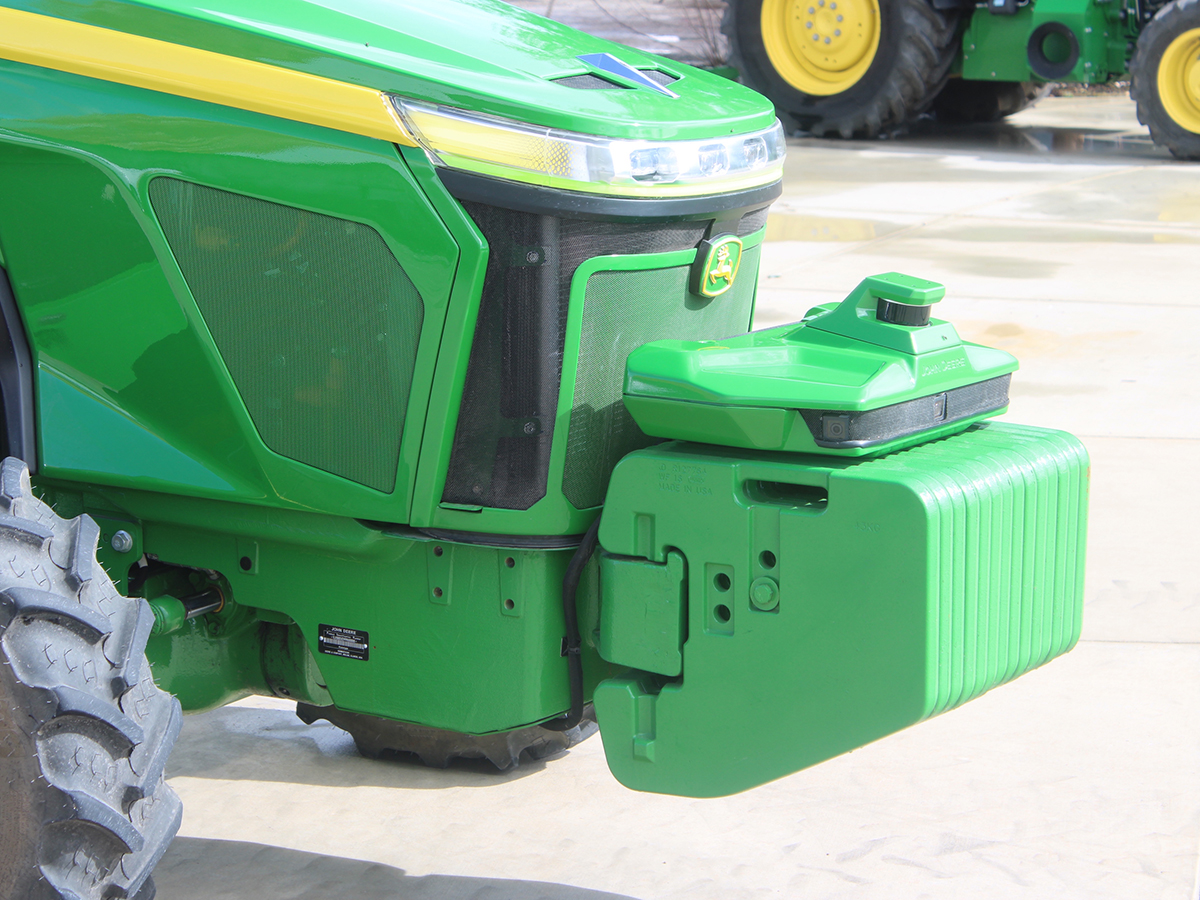
There are other slower charging options that don’t require three-phase power, such as an adapter that will connect to a regular 50 Amp welder plug in a farm shop, as well as AC Level II chargers.
Operating the tractor is simple. Controls are similar to a BEV car, with a forward-reverse shuttle lever and speed control pedal along with push-button cruise control to set ground speed. With separate electric motors running all systems, such as hydraulics and power take-off, each one can be set to an independent optimum speed, something that is a little harder to do on a diesel tractor, with each system dependent on engine r.p.m.
The tractors will also come autonomy ready.
“One thing that’s neat about electric vehicles is they are fundamentally design-ready for autonomy,” says LeVely.
“The reason that is, is having every function on a tractor controlled by an e-motor allows you through software to make the tractor do any operation you want as precisely as you can.
“Any autonomy jobs in the future can be controlled very efficiently with it because it was built to do so.”
Deere expects a limited commercial release of the tractors in 2026.




